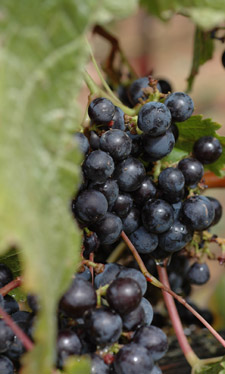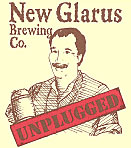As I type this nobody has come up with the starting bid of $1,500 for eight bottles of Ballantine Burton Christmas beer, and it’s not going to be me.
Sure, I wish I had a chance to try the beer. It’s intriguing that it would have stood up all these years, but as long as we are wishing for impossible things … I’d like to have a taste of what it was like in the 1960s or ’70s, when Fritz Maytag and other new wave brewers tasted it. It likely influenced where a new generation of beers was headed.
There are other beers like that – I’m not interested in old bottles that turn up, but what they tasted like at their prime – but I’ll start with a simple 6-pack.
1. Ballantine Burton Ale. For reasons already stated.

2. New Albion Ale. New Albion was the first American microbrewery built from scratch and you simply cannot measure its impact. The Brewers Association this year honored founder Jack McAuliffe. Michael Jackson wrote that this was the “truest to the (English ale) model in its hoppy bitterness and well-attenuated body.”
(The photo is a sign that used to hang at New Albion and now sits above the window looking into the barrel room at Russian River Brewing in Santa Rosa.)
3. Cartwright Portland Beer. Cartwright was Oregon’s first micro, and Don Younger of the Horse Brass Pub tells wonderful stories about the excitement surrounding the arrival of its first beer. Problem is Cartwright beers weren’t very good (Jackson refers to “some technical” woes). The second micro, BridgePort, was much better, and you know the rest about what happened in Portland.
4. Newman’s Pale Ale. Bill Newman opened the first micro east of the Mississippi in 1981 and kept it running until 1987, exerting influence mostly forgotten 20 years later. He was devoted to the English model, fining his beer in casks and serving it at cellar temperature. In Beer School, Steve Hindy and Tom Potter write “he refused to compromise with anything modern.”
5. Shiner “Old World Bavarian Draft.” Locals still talk about the dark Bavarian-style beer that brewmaster Kosmos Spoetzl brought with him from Germany in 1915. It was brewed into the 1960s but had different names after Prohibition. Spoetzl had a strong German consumer base, but it is still interesting that he was able sell an all-malt German-style lager at time (pre-Prohibition) the rest of the country was drifting toward lagers lighter in color and flavor. After all, Shiner is in Texas (south of San Antonio).
6. Anchor Steam (circa 1965). Maytag readily admits the beer was sour and not very good when he first tasted it and bought a controlling share of the brewery. The American beer revolution hasn’t been driven by steam beer, but without that (then) sour beer …
 Don’t forget, next Friday is
Don’t forget, next Friday is 
 In all fairness to Todd Haefer – who writes a Beer Man column that appears in many newspapers part of the Gannett chain and already catches enough grief for some of his comments – he didn’t write the headline and the term didn’t appears in his copy, but here it is:
In all fairness to Todd Haefer – who writes a Beer Man column that appears in many newspapers part of the Gannett chain and already catches enough grief for some of his comments – he didn’t write the headline and the term didn’t appears in his copy, but here it is: